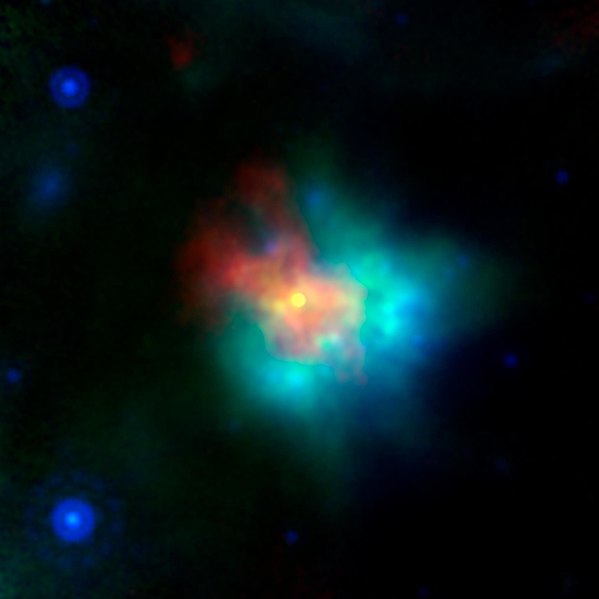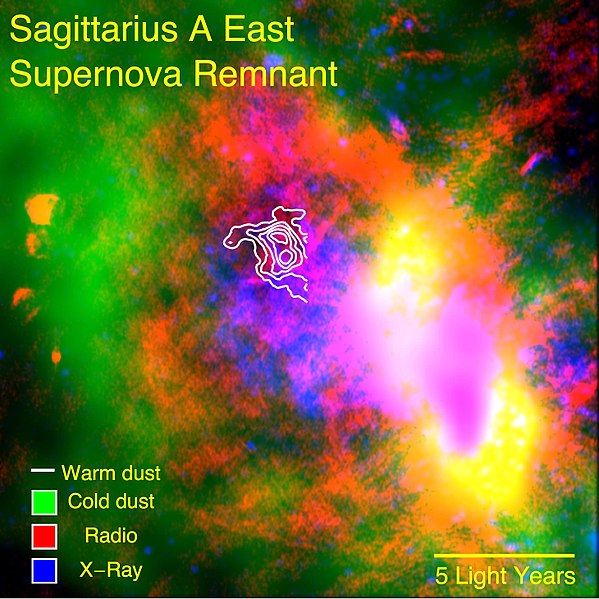The Crab Nebula is a supernova remnant and pulsar wind nebula in the constellation of Taurus. The common name comes from a drawing that somewhat resembled a crab with arms produced by William Parsons, 3rd Earl of Rosse, in 1842 or 1843 using a 36-inch (91 cm) telescope. The nebula was discovered by English astronomer John Bevis in 1731. It corresponds with a bright supernova recorded by Chinese astronomers in 1054 as a guest star. The nebula was the first astronomical object identified that corresponds with a historically-observed supernova explosion.
Hubble Space Telescope mosaic image assembled from 24 individual Wide Field and Planetary Camera 2 exposures taken in October 1999, January 2000, and December 2000
Reproduction of the first depiction of the nebula by Lord Rosse (1844) (colour-inverted to appear white-on-black)
HaRGB image of the Crab Nebula from the Liverpool Telescope, exposures totalling 1.4 hours.
The Crab Nebula M1
A supernova remnant (SNR) is the structure resulting from the explosion of a star in a supernova. The supernova remnant is bounded by an expanding shock wave, and consists of ejected material expanding from the explosion, and the interstellar material it sweeps up and shocks along the way.
SN 1054 remnant (Crab Nebula).
HBH 3 (Spitzer Space Telescope; August 2, 2018)
G54.1+0.3 (November 16, 2018)
Image: 15 044a Super Nova Remnant Planet Formation SOFIA 20150319







